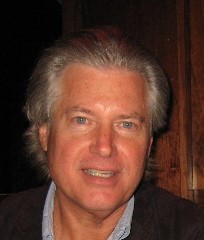Academic history and awards
Locke has studied and worked in the United States and the United Kingdom. He received a B.A. in speech communication from Ripon College in 1963, and both an M.A. and a Ph.D. in speech pathology, audiology and speech science from Ohio University in 1965 and 1968 respectively. He went on to postdoctoral fellowships in psychology at Yale University and Oxford University in the United Kingdom (UK) from 1972-74.
He is currently a Professor of Language Science at Lehman College of the City University of New York. He has previously been on the faculty at the University of Illinois, the University of Maryland, Harvard University, and at the University of Sheffield, and Cambridge University in the UK.
Locke’s research has been funded by a wide variety of sources including the National Institutes of Health, the Axe-Houghton Foundation, the James S. McDonnell Foundation, the March of Dimes, the Cape Branch Foundation, and the Commonwealth Fund. He has held significant roles in the American Speech. Language, and Hearing Association, the Linguistic Society of America, and the Society for Research in Child Development.
He has been honored as a recipient of the Science Award from Ohio University (2002) and the Faculty Recognition Award for Research and Scholarship from Lehman College (2009).
He was a founding editor of the journal Applied Psycholinguistics, and has served on numerous other editorial boards. His administrative roles have included: director of the Interdepartmental Program in Linguistics, Lehman College (2003–2007), head of the department of human communication science, University of Sheffield, Sheffield, England (1995—1998), founding director and senior research scientist, Neurolinguistics Laboratory, Massachusetts General Hospital, Boston, Massachusetts (1984–1995), director and professor, Graduate Program in Communication Sciences and Disorders, MGH Institute of Health Professions (1983–1995), director and professor, Linguistic Institute, University of Maryland, College Park (1982), and director, Speech and Hearing Laboratory, Institute for Child Behavior and Development, University of Illinois at Urbana-Champaign (1969–1980).
Brief summary of works
Locke is the author of two volumes that have played central roles in the understanding of child language development in a biological context, the first focused on the development of phonological capabilities, which Locke views as greatly under-emphasized in the study of the emergence of human language, [1] and the second a far-ranging synthesis of evidence related to the acquisition of language. [2] These works have been cited hundreds of times in the scientific literature, and have influenced works related specifically to phonological development, [3] [4] to language development in general, [5] to language evolution, [6] [7] [8] and to broad topics on developmental theory. [9] [10] He has recently authored two additional volumes directing attention to the significance of speech communication in the modern world, [11] (reviewed by, among others, The New York Times and the Washington Times) and to eavesdropping and gender differences in understanding of human communication and the human condition. [12]
Key articles among the more than 100 that he has published include fundamental contributions to: a) the understanding of infant babbling and how it lays foundations for speech, [13] [14] b) various aspects of communication disorders and how they illuminate the language faculty and neurolinguistics, [15] [16] c) a groundbreaking contribution to the understanding of how language evolved in humanity based on a theory of parental selection, [17] and d) the role of human life history (with Barry Bogin) in language evolution, based on the argument that the prolonged developmental period of humanity includes a childhood and an adolescence, phases that are absent in non-human primates, and both of which provide extensive and long-term opportunities for learning that lay groundwork for human language and culture. [18] Locke's collaborator, Barry Bogin, has written widely on the origins of human childhood as a special stage of development and to related topics that led to the collaboration. [19] [20] [21] Locke is a widely sought-after lecturer, and has been invited to speak on his work to audiences around the world.
Language acquisition is the process by which humans acquire the capacity to perceive and comprehend language, as well as to produce and use words and sentences to communicate.
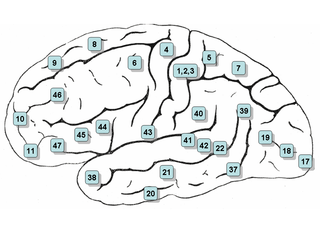
Neurolinguistics is the study of neural mechanisms in the human brain that control the comprehension, production, and acquisition of language. As an interdisciplinary field, neurolinguistics draws methods and theories from fields such as neuroscience, linguistics, cognitive science, communication disorders and neuropsychology. Researchers are drawn to the field from a variety of backgrounds, bringing along a variety of experimental techniques as well as widely varying theoretical perspectives. Much work in neurolinguistics is informed by models in psycholinguistics and theoretical linguistics, and is focused on investigating how the brain can implement the processes that theoretical and psycholinguistics propose are necessary in producing and comprehending language. Neurolinguists study the physiological mechanisms by which the brain processes information related to language, and evaluate linguistic and psycholinguistic theories, using aphasiology, brain imaging, electrophysiology, and computer modeling.
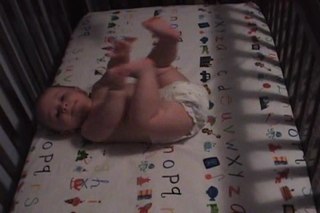
Babbling is a stage in child development and a state in language acquisition during which an infant appears to be experimenting with uttering articulate sounds, but does not yet produce any recognizable words. Babbling begins shortly after birth and progresses through several stages as the infant's repertoire of sounds expands and vocalizations become more speech-like. Infants typically begin to produce recognizable words when they are around 12 months of age, though babbling may continue for some time afterward.
Elizabeth Ann Bates was a professor of cognitive science at the University of California, San Diego. She was an internationally renowned expert and leading researcher in child language acquisition, psycholinguistics, aphasia, and the neurological bases of language, and she authored 10 books and over 200 peer-reviewed articles and book chapters on these subjects. Bates was well known for her assertion that linguistic knowledge is distributed throughout the brain and is subserved by general cognitive and neurological processes.
Baby talk is a type of speech associated with an older person speaking to a child or infant. It is also called caretaker speech, infant-directed speech (IDS), child-directed speech (CDS), child-directed language (CDL), caregiver register, parentese, or motherese.
Phonological awareness is an individual's awareness of the phonological structure, or sound structure, of words. Phonological awareness is an important and reliable predictor of later reading ability and has, therefore, been the focus of much research.
Specific language impairment (SLI) is diagnosed when a child's language does not develop normally and the difficulties cannot be accounted for by generally slow development, physical abnormality of the speech apparatus, autism spectrum disorder, apraxia, acquired brain damage or hearing loss. Twin studies have shown that it is under genetic influence. Although language impairment can result from a single-gene mutation, this is unusual. More commonly SLI results from the combined influence of multiple genetic variants, each of which is found in the general population, as well as environmental influences.
The language module or language faculty is a hypothetical structure in the human brain which is thought to contain innate capacities for language, originally posited by Noam Chomsky. There is ongoing research into brain modularity in the fields of cognitive science and neuroscience, although the current idea is much weaker than what was proposed by Chomsky and Jerry Fodor in the 1980s. In today's terminology, 'modularity' refers to specialisation: language processing is specialised in the brain to the extent that it occurs partially in different areas than other types of information processing such as visual input. The current view is, then, that language is neither compartmentalised nor based on general principles of processing. It is modular to the extent that it constitutes a specific cognitive skill or area in cognition.
Language development in humans is a process starting early in life. Infants start without knowing a language, yet by 10 months, babies can distinguish speech sounds and engage in babbling. Some research has shown that the earliest learning begins in utero when the fetus starts to recognize the sounds and speech patterns of its mother's voice and differentiate them from other sounds after birth.
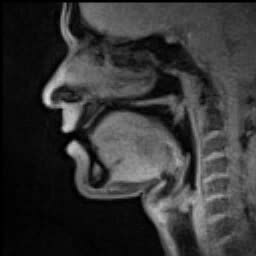
Speech is a human vocal communication using language. Each language uses phonetic combinations of vowel and consonant sounds that form the sound of its words, and using those words in their semantic character as words in the lexicon of a language according to the syntactic constraints that govern lexical words' function in a sentence. In speaking, speakers perform many different intentional speech acts, e.g., informing, declaring, asking, persuading, directing, and can use enunciation, intonation, degrees of loudness, tempo, and other non-representational or paralinguistic aspects of vocalization to convey meaning. In their speech, speakers also unintentionally communicate many aspects of their social position such as sex, age, place of origin, physical states, psychological states, physico-psychological states, education or experience, and the like.

Speech-language pathology is a field of healthcare expertise practiced globally. Speech-language pathology (SLP) specializes in the evaluation, diagnosis, treatment, and prevention of communication disorders, cognitive-communication disorders, voice disorders, pragmatic disorders, social communication difficulties and swallowing disorder across the lifespan. It is an independent profession considered an "allied health profession" or allied health profession by professional bodies like the American Speech-Language-Hearing Association (ASHA) and Speech Pathology Australia. Allied health professions include audiology, optometry, occupational therapy, rehabilitation psychology, physical therapy and others.
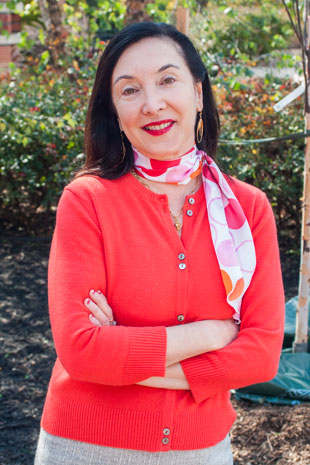
Laura-Ann Petitto is a cognitive neuroscientist and a developmental cognitive neuroscientist known for her research and scientific discoveries involving the language capacity of chimpanzees, the biological bases of language in humans, especially early language acquisition, early reading, and bilingualism, bilingual reading, and the bilingual brain. Significant scientific discoveries include the existence of linguistic babbling on the hands of deaf babies and the equivalent neural processing of signed and spoken languages in the human brain. She is recognized for her contributions to the creation of the new scientific discipline, called educational neuroscience. Petitto chaired a new undergraduate department at Dartmouth College, called "Educational Neuroscience and Human Development" (2002-2007), and was a Co-Principal Investigator in the National Science Foundation and Dartmouth's Science of Learning Center, called the "Center for Cognitive and Educational Neuroscience" (2004-2007). At Gallaudet University (2011–present), Petitto led a team in the creation of the first PhD in Educational Neuroscience program in the United States. Petitto is the Co-Principal Investigator as well as Science Director of the National Science Foundation and Gallaudet University’s Science of Learning Center, called the "Visual Language and Visual Learning Center (VL2)". Petitto is also founder and Scientific Director of the Brain and Language Laboratory for Neuroimaging (“BL2”) at Gallaudet University.
Speech acquisition focuses on the development of vocal, acoustic and oral language by a child. This includes motor planning and execution, pronunciation, phonological and articulation patterns.
Manual babbling is a linguistic phenomenon that has been observed in deaf children and hearing children born to deaf parents who have been exposed to sign language. Manual babbles are characterized by repetitive movements that are confined to a limited area in front of the body similar to the sign-phonetic space used in sign languages. In their 1991 paper, Pettito and Marentette concluded that between 40% and 70% of deaf children's manual activity can be classified as manual babbling, whereas manual babbling accounts for less than 10% of hearing children’s manual activity. Manual Babbling appears in both deaf and hearing children learning American Sign Language from 6 to 14 months old.
Developmental verbal dyspraxia (DVD), also known as childhood apraxia of speech (CAS) and developmental apraxia of speech (DAS), is a condition in which an individual has problems saying sounds, syllables and words. This is not because of muscle weakness or paralysis. The brain has problems planning to move the body parts needed for speech. The individual knows what they want to say, but their brain has difficulty coordinating the muscle movements necessary to say those words.
A late talker is a toddler experiencing late language emergence (LLE), which can also be an early or secondary sign of an autism spectrum disorder, or other developmental disorders, such as fetal alcohol spectrum disorder, attention deficit hyperactivity disorder, intellectual disability, learning disability, social communication disorder, or specific language impairment. Lack of language development, comprehension skills, and challenges with literacy skills are potential risks as late talkers age. Outlook for late talkers with or without intervention is generally favorable. Toddlers have a high probability of catching up to typical toddlers if early language interventions are put in place. Language interventions include general language stimulation, focused language stimulation and milieu teaching.
Developmental language disorder (DLD) is identified when a child has problems with language development that continue into school age and beyond. The language problems have a significant impact on everyday social interactions or educational progress, and occur in the absence of autism spectrum disorder, intellectual disability or a known biomedical condition. The most obvious problems are difficulties in using words and sentences to express meanings, but for many children, understanding of language is also a challenge. This may not be evident unless the child is given a formal assessment.
D. Kimbrough Oller, also known as Kim Oller, is an American scientist who has contributed to the fields of the evolution of language, child phonology, speech-language pathology, and to the fields of bilingualism and second-language acquisition. He is currently Professor and Plough Chair of Excellence at the University of Memphis. He is also an external faculty member of the Konrad Lorenz Institute for Evolution and Cognition Research and a permanent member of the Scientific Advisory Board of the LENA Research Foundation of Boulder, Colorado. Oller was elected as a Fellow of the American Speech–Language–Hearing Association (ASHA) in 2004 and was granted the Honors of ASHA in 2013.
Susan Ellis Weismer is a language and communication scientist known for her work on language development in children with specific language impairment and autism spectrum disorder (ASD). She is the Oros Family Chair and Professor of Communication Sciences and Disorders at the University of Wisconsin–Madison, where she is a Principal Investigator and Director of the Language Processes Lab. She has also served as the Associate Dean for Research, College of Letters and Sciences at the University of Wisconsin–Madison.
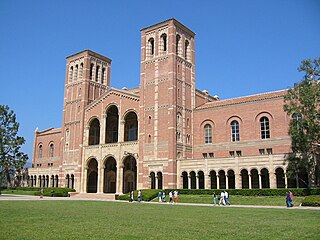
Susan Curtiss is an American linguist. She is Professor Emerita at the University of California, Los Angeles. Curtiss' main fields of research are psycholinguistics and neurolinguistics. Her 1976 UCLA PhD dissertation centered on the study of the grammatical development of Genie, a famous feral child. Her subsequent work has been on grammatical development in children with SLI; maturational constraints on first-language development ; hemispheric specialization for language and language acquisition; and the cognitive modularity of grammar.
